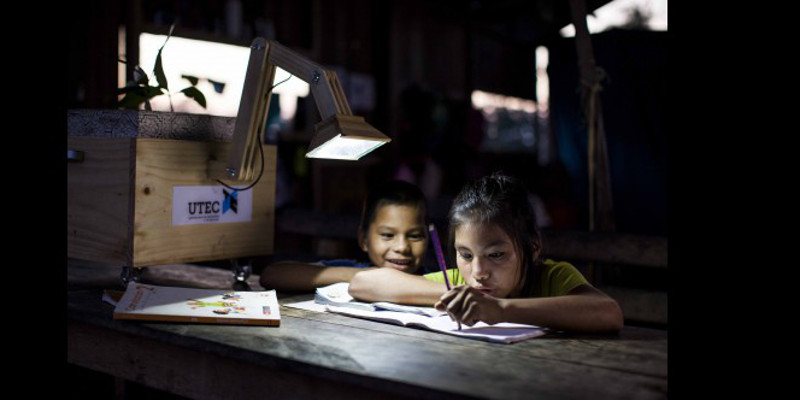In many remote areas such as those in Peru or rural areas in the tropical forest, there is a constant shortage of electric energy.
Eight students from the Universidad de Ingeniería y Tecnología (UTEC) in Peru have developed a Plant Lamp that acts as an alternative renewable energy generating system in an attempt to solve some electric energy shortage problems.

UTEC’s Plant Lamp is capable of supplying two hours of light each day via low energy consumption LED lamp. The system operates using the energy stored in the soil which contains nutrients and microorganisms released by plants during their growth. This is how the students fed the lamp.
“We put the plant and soil into a wooden plant pot together with a previously established and properly protected irrigation system. Then, inside the pot we place the energy generation system that we created which stores soil and electrodes capable of converting plant nutrients into electric energy” said Elmer Ramirez, a professor of Energy and Power Engineering at UTEC and leader of the Plant lamp research team.
Currently, the project is being implemented in the native community, Nuevo Saposa, a region known for having the least access to electricity.
“While there are shortages of a number of resources in Nuevo Saposoa, the absence of electric energy has a major impact on its social, educational and family development”, said Jessica Ruas, UTEC Marketing Director, who also points out that 10 prototypes of the Plant lamp have been delivered to families of this community.
Nuevo Saposoa is surrounded by a lot of plants and vegetation which inspired the creation of a lamp that uses nature as its power source.
Now the residents will have access to renewable energy which will provide light in their homes that can be used by children to study or during work hours to sell products and earn a living.
UTEC was motivated to create the Plant Lamp and demonstrate how certain societal problems can be rectified by means of engineering. This new initiative combines creativity, research, innovation and development with a close look at the geographical setting and the environment.


Comments are closed, but trackbacks and pingbacks are open.